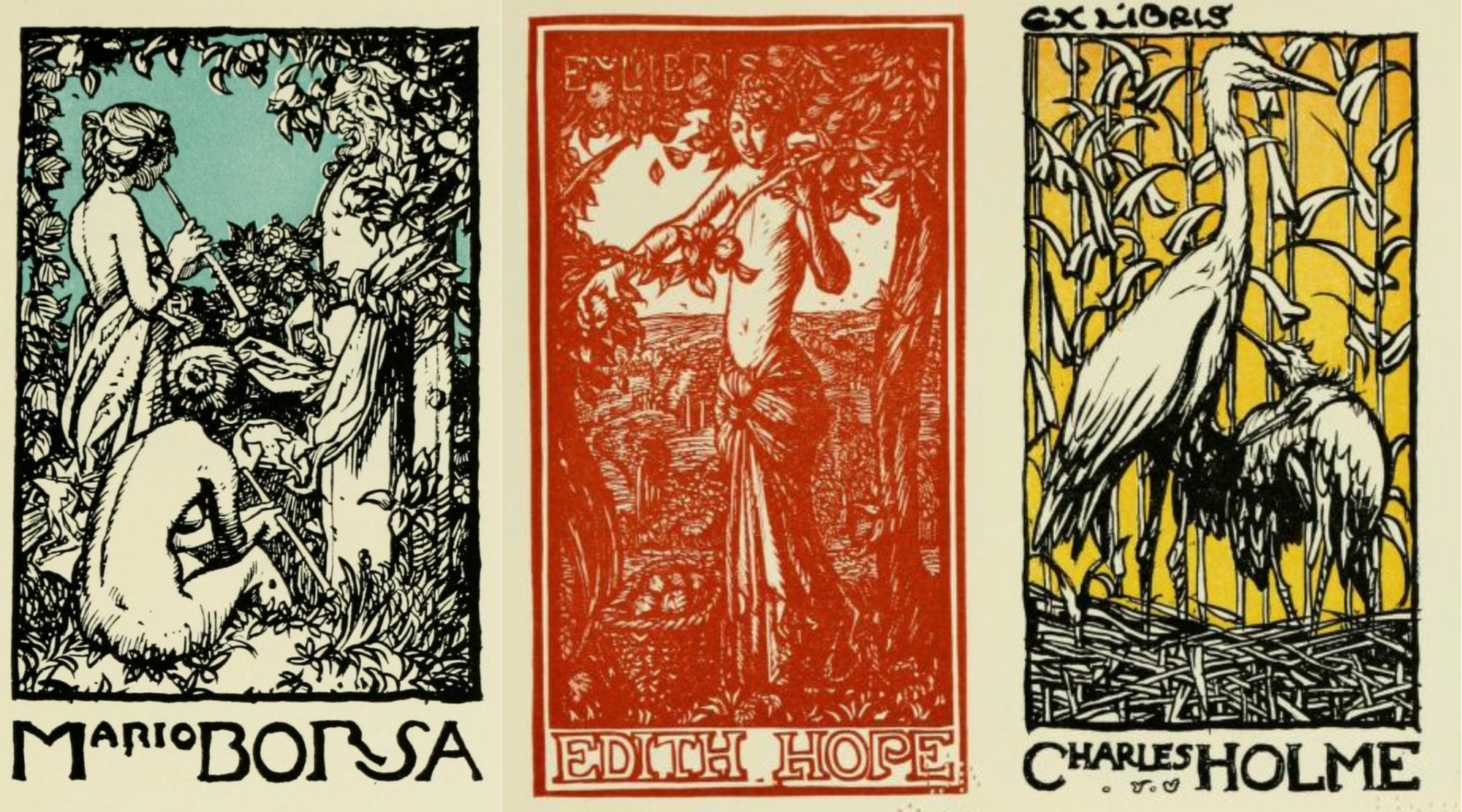The Lost Art of the Bookplate
The history (and potential) of personalized bookplates.
15th century Hedgehog bookplate of Johannes Knabensberg / Igler. From A Treasury of Bookplates from the Renaissance to the Present. F. Johnson, Dover, 1977.
by Tara Cheesman
"This spiritually rich Hymn-Book belongs to Esther Kolbin. Written December 27, 1813." From Pennsylvania German bookplates, a study by Henry Stauffer Borneman, 1953. Accessed through the Internet Archive.
People have been borrowing books and forgetting to return them since the mid-fifteenth century. The earliest known example of a bookplate, a square of printed paper declaring pride of ownership (often with the threat of potential retaliation) is dated c.1450. It belonged to Johannes Knabensberg, nicknamed Igler (derived from the German word for hedgehog). It features a primitive woodcut of a hedgehog with a ribbon over his head and the words “Hans Igler, that a hedgehog may kiss you” in German. While no one is exactly sure what the phrase means, the general belief is that it was intended as either a threat or promise – dependent on how you feel about being kissed by a hedgehog – related to the safe or failed return of Igler’s book.*
Moveable type and printing presses allowed the spread of the book trade to the masses and encouraged the collection of books into personal libraries. Alongside the assembling of these libraries came a demand for bookplates which continued well into the twentieth century. Artists as varied as Albrecht Durer, Hans Holbein the Younger, Paul Revere, Kate Greenway, Kathe Kollowitz, Rockwell Kent, M.C. Escher, and Barry Moser have been commissioned to create bookplates by patrons or done so as gifts for friends. Dora Carrington made several for Lytton Strachey, and Picasso designed one for his art dealer’s son.
Early 20th c. bookplates by Belgian Artist Frank Brangwyn. From Bookplates by Frank Brangwyn with Eden Phillpotts, 1920, Lippincott.
For individuals and institutions, old bookplates are collectible, falling under the category of prints and printmaking. Especially coveted are those owned by famous people – historical figures like George Washington, John Adams, Mussolini, and writers like Robert Frost, Charles Dickens, Jack London, and Ernest Hemingway. International societies exist, such as The Bookplate Society based out of the UK, whose members collect and trade with fellow enthusiasts around the world. These small, specialized demonstrations of printmakers’ art can be created by employing a variety of processes such as woodcut, engraving, aquatint, mezzotint, lithography, silk-screen, linoleum cut, and etching. Early examples often featured a family coat of arms and motto, while more modern versions contain images with some significance to the owner. Charles De Gaulle’s Ex Libris shows an arrow shattering a swastika. Jack London’s features a wolf’s head. The words “From the library of” or the Latin “Ex Libris” are usually included. But sometimes, the artist will employ clever puns or dire threats. Bookplates can also be humorous and even risqué.
Sadly, gluing small squares of paper to the inside covers or end sheets of our treasured and often valuable books is not as desirable as it once was. Or, perhaps their slip in popularity is because we do not lend out books like we once did. Today, the most seen bookplates are those signed by authors and offered to readers who pre-order their books.
Bookplate of the Metropolitan Museum of Art, from Bookplates of the Metropolitan Museum of Art by Susan Share, 1985. Digital collection of the MET library.
And yet, imagine a beach house library filled with paperbacks. Each book has a bookplate featuring a simple watercolor sketch of the sand & sea and the words “From the Library of” to ensure they find their way home after a day in the sun. What is more charming than that? While bookplates are particularly suited for the hospitality sector –libraries created for hotels and Bed & Breakfasts where books are provided for guests – for the individual, a custom bookplate can signify a passion for books and literature that transcends a volume’s market value. And make a statement regarding the owner’s connection to the text. They also make excellent gifts. A set of bookplates sent with a carefully curated selection of children’s books will delight every new parent.
What would your dream bookplate look like? Here at Foxtail Books, custom bookplates are just one arrow in our quiver for creating personalized, design-conscious home libraries. Whether a simple monogram or an ode to the hedgehog, we love how small details like these can bring personality and elegance to a collection.
*It’s worth noting (for the sake of accuracy) that there is some debate in the collector’s community as to whether Igler’s hedgehog is the first bookplate. Another German bookplate, made for and displaying the coat of arms of the German Brandenburg family, is also a contender. But Igler’s hedgehog, possibly because it has a more colorful story, is usually cited as the earliest.
Tara Cheesman is a freelance book critic and a National Book Critics Circle member. Her work has appeared in The Los Angeles Review of Books, CrimeReads, Guernica, Vol. 1 Brooklyn, The Mystery Tribune and other online publications. She received her Bachelors of Fine Arts from the School of Visual Arts in New York City.





